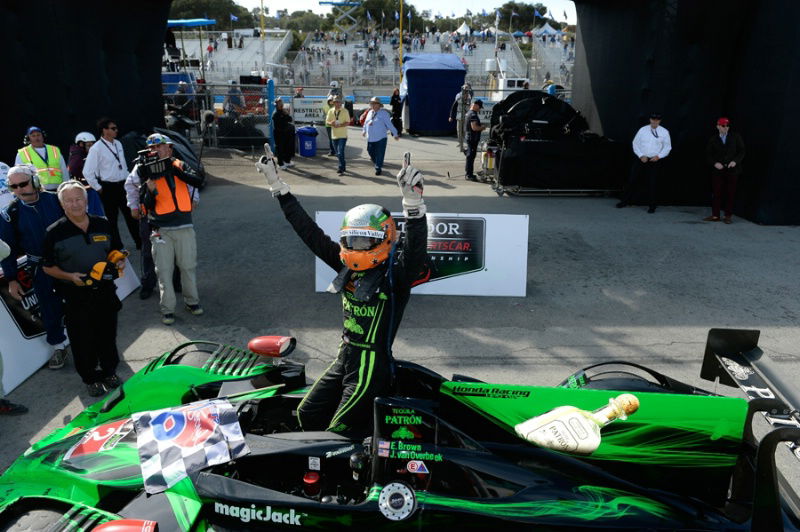Dunlop launches future race car initiative

Dunlop has announced its plans to look towards the future of motorsport with a brand-new initiative aimed at celebrating the innovations and advancement of technology in the automotive industry.
Coming as Dunlop celebrates the anniversary of John Boyd Dunlop inventing the pneumatic tyre 125 years ago, the company will now look 125 years into the future to predict where the race car industry will develop more than a century from now.
As such, Dunlop has commissioned a futurology report to look into the future of race cars, specifically what they will look like up to 125 years from now. The assertions made in the report are revelatory and hint at a far greener, more interactive racing future.
Written by renowned futurologist, Dr. Ian Pearson, the report states that racing cars of years hence could have extremely powerful electric engines and linear induction plasma thrusters, as opposed to internal combustion engines. These thrusters would work by bombarding a gas with electrons, which would in turn create the plasma. Superconducting coils could then create large electromagnetic fields to propel it.
"Newton's laws of motion dictate that as the thruster fires a high-speed pulse out the rear end, the car gains equal forward momentum. It isn't trivial engineering, and you would have to be careful about the power and direction of the jets, but this isn't just sci-fi. The military have already prototyped plasma rail guns that work well, and 125 years of development should easily bring this into the race-car technology arena."
Ultra-strong chassis materials, such as carbon nanotubes and graphene, could create great strength and rigidity at low weight; keeping future racing cars on track and helping to improve handling. Some could even change shape mid-race, allowing aerodynamics to vary on command. Engineers might use polymer gels that can contract like muscles and shape-memory alloys that 'remember' their original, cold-forged shape: returning to it when heated. Future developments in either field could allow components to contract and expand, and engineers will be able to use these materials to design large changes of shape into body parts.
Electronically controlled materials might also be built into racing tyres, according to the report, enabling variable grip and wear trade-offs. Polymer gels could easily make a short, fat component become a long, thin one. If millions of microscopic spikes were laid down using 3D printing during manufacture, then as the tyre wears, new layers could be brought to the surface. These could then be extended or retracted on demand: standing up to increase grip and folding flat to reduce drag.
"Imagine the spikes as miniature Eiffel Towers, if the base columns were to be squeezed together, you'd obviously expect the height to increase. At a scale from microns to millimetres, microstructures such as this would offer enormous potential for variable grip that could be precisely controlled at high speed."
The report also predicts that the introduction of android drivers could be necessary. "Imagine if the cars could accelerate and brake five times faster than today's top-tier open-wheel racers. The primary limitations will be human reaction times and physical limits, so we will also see android races," Pearson explained. "With full emotional capability, androids will have a strong will to win, coupled to superior reaction times and strength so could execute faster manoeuvres and make for even more compelling spectator events."
Augmented reality (AR) will become a strong part of everyday life in the future, according to the report. Video visors (such as Google Glass) already exist, overlaying computer-generated imagery onto the field of view. For motorsport spectators in the future this means one person might see one sponsor's name on a car, while the person next to them sees a different one, depending on their personal preferences.
AR would not only make racing cars look different to each individual viewer, but could also allow the spectators themselves to participate in races. If the technology were to converge with online computer gaming, it could allow people to drive virtually alongside real-life racers and other viewers, making the whole experience more immersive and exciting.
"Some cars could be partly driven by teams of gamers, with an artificial intelligence (AI) autopilot providing a failsafe to protect other drivers. Just as gamers drive against computer-driven cars when they play racing games on a console today, high-tech versions of those driving programmes could control real cars on a race track. The AI could ensure that it doesn't cause a big danger of accidents, but gamers could account for at least some of the decisions," continued Pearson.
'Active skin' could also be developed over the next few decades. This will essentially be electronics printed directly onto the skin surface for medical monitoring and so on - but it could also link through to people's nerves. That would enable the recording and replay of sensory signals, thus letting viewers and spectators feel the physical sensations being experience by the drivers.
To have your say on the future of motorsports, please visit the Dunlop Future Race Car Challenge on Facebook - CLICK HERE

